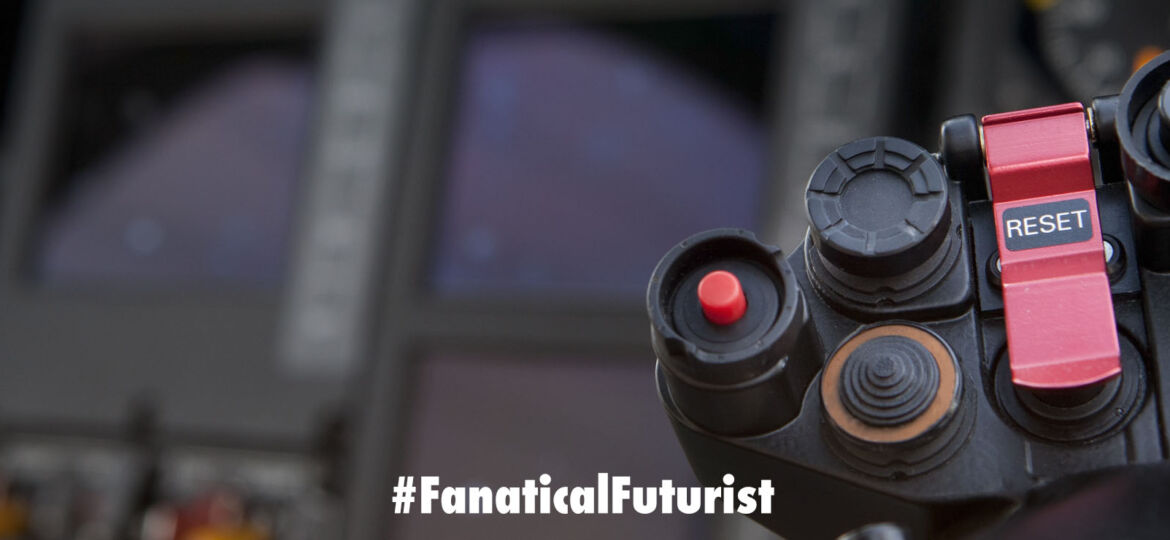
WHY THIS MATTERS IN BRIEF
Humans will increasingly be working with and alongside AI’s – and the military is no exception.
 Love the Exponential Future? Join our XPotential Community, future proof yourself with courses from XPotential University, connect, watch a keynote, or browse my blog.
Love the Exponential Future? Join our XPotential Community, future proof yourself with courses from XPotential University, connect, watch a keynote, or browse my blog.
In a major technological leap forward for national defense in the digital age the US Air Force last week announced that an Artificial Intelligence (AI) worked as an active crew member alongside a human pilot onboard a military aircraft, and even though so far military AI’s have proven themselves capable of defeating some of America’s top fighter pilots in battle simulations and dog fights, as well as being capable of turning human soldiers into living sensor networks, controlling swarms of drones, and squadrons of autonomous Reapers, this was the first time ever that an AI has been an active member of the crew. Despite all these military AI advances though it still doesn’t seem like anyone is getting any closer to being able to terminate them when they go rogue.
The AI algorithm, known as ARTUµ, flew with pilot US Air Force Major “Vudu” on a U-2 Dragon Lady assigned to the 9th Reconnaissance Wing at Beale Air Force Base. Air Combat Command’s U-2 Federal Laboratory researchers developed ARTUµ and trained it to execute specific in-flight tasks that otherwise would be done by the pilot.
The test flight was the result of years of hard work within the USAF to apply cutting edge technology to military operations as it competes with other world powers in the digital age.
“ARTUµ’s ground breaking flight culminates our three year journey to becoming a digital force,” said Dr. William Roper, assistant secretary of the Air Force for acquisition, technology and logistics. “Putting AI safely in command of a US military system for the first time ushers in a new age of human-machine teaming and algorithmic competition. Failing to realize AI’s full potential will mean ceding decision advantage to our adversaries.”
During this flight, ARTUµ was responsible for sensor employment and tactical navigation, while the pilot flew the aircraft and coordinated with the AI on sensor operation. Together, they flew a reconnaissance mission during a simulated missile strike. ARTUµ’s primary responsibility was finding enemy launchers while the pilot was on the lookout for threatening aircraft, both sharing the U-2’s radar.
The flight was part of a precisely constructed scenario which pitted the AI against another dynamic computer algorithm in order to prove the new technology.
“We know that in order to fight and win in a future conflict with a peer adversary, we must have a decisive digital advantage,” said Air Force Chief of Staff Gen. Charles Q. Brown, Jr. “AI will play a critical role in achieving that edge, so I’m incredibly proud of what the team accomplished. We must accelerate change and that only happens when our Airmen push the limits of what we thought was possible.”
After take off, the sensor control was positively handed off to ARTUµ who then manipulated the sensor systems on board based on insight previously learned from over a half-million computer simulated training iterations. The pilot and AI successfully teamed to share the sensor and achieve the mission objectives.
The U-2 Federal Laboratory designed this AI technology to be easily transferable to other systems and plan to further refine the technology, and the flight provided invaluable data for not only the team to learn from, but also ARTUµ which used it as yet another opportunity to learn and hone its skills.
“Blending expertise of a pilot with capabilities of machine learning, this historic flight directly answers the National Defense Strategy’s call to invest in autonomous systems,” said Secretary of the Air Force Barbara Barrett. “Innovations in artificial intelligence will transform both the air and space domains.”
The U-2 Federal Laboratory was originally established to bring together a “confluence of warfighter, developer, and acquirer” vertically integrated under the same operational roof, and their primary mission is to develop new computing and AI systems that run at the very edges of their operational networks which ultimately gives the US military the advantage of being able to see, process, and react faster to events on the battlefield.
The historic flight with AI also comes just two months after the U-2 Federal Laboratory team updated inflight software during a U-2 training mission which was yet another major milestone in the world of warfare.
















